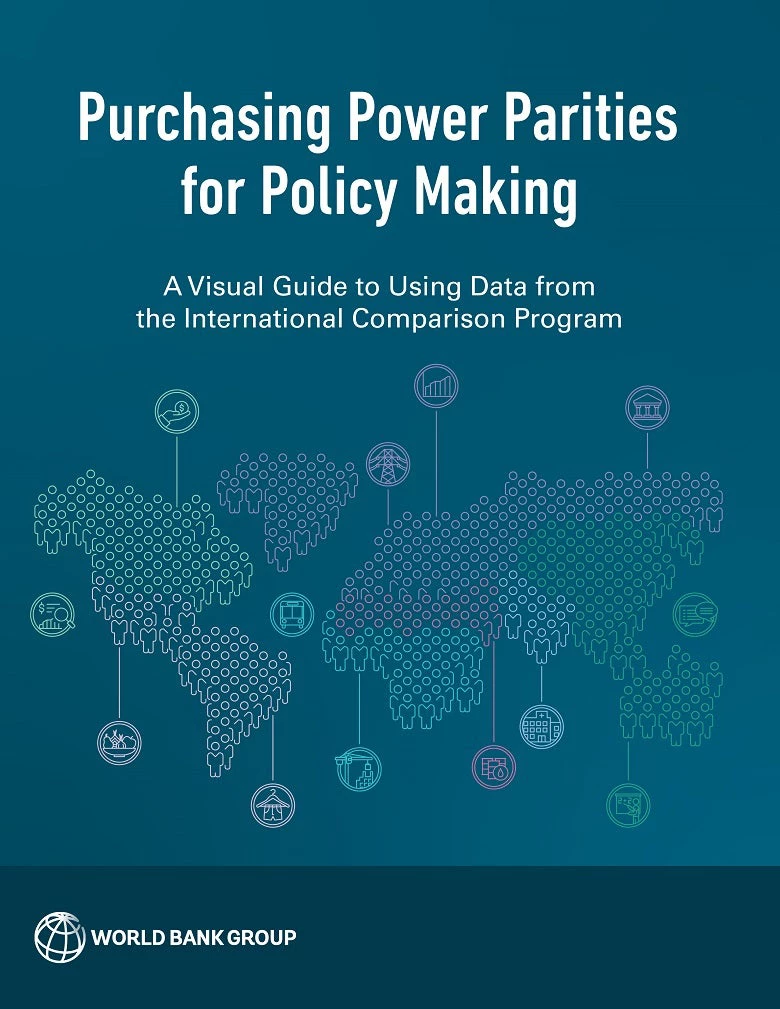New results from the ICP including purchasing power parities (PPP), price level indexes and PPP-based expenditures for reference year 2017 are now available at icp.worldbank.org. This blog series, edited by Edie Purdie, covers all aspects of the ICP and explores the use made of these data by researchers, policymakers, economists, data scientists and others. We encourage users to share their data applications and findings in this blog series via icp@worldank.org.
At the recent 53rd session of the United Nations Statistical Commission (UNSC), the Chief Statisticians of national statistical offices (NSOs) highlighted the importance of purchasing power parities (PPPs) and other International Comparison Program (ICP) results in analyzing the global economy. They also noted countries’ progress in incorporating the ICP data collection and compilation into the day-to-day work of NSOs. The ICP’s important contribution to monitoring progress towards the Sustainable Development Goals (SDGs) was also recognized.
This blog explains how PPPs and ICP data, and the indicators they enable, help countries track their progress towards the UN’s 2030 Agenda by showcasing content from the World Bank’s recent publication, “Purchasing power parities for policy making: a visual guide to using data from the International Comparison Program” (available as an interactive web publication or as a pdf download).
Through 70 innovative visualizations and discussions, the guide showcases the wide-ranging applications of PPPs, price levels, and other ICP outputs. It illustrates that the price and expenditure data collected and compiled by nearly 180 national statistical offices not only provide a critical and comprehensive view of the global economy, but also directly benefit countries’ development and domestic policy agendas, including their commitments to the SDGs. These benefits of the publication were confirmed at the UNSC as well, where the Chief Statisticians hailed it as a vital tool in demonstrating the use of ICP results to measure the effectiveness of domestic policies, compare the performance of economies, and track development and progress over time.

The guide features ICP data relevant to the following SDGs:
- Goal 1 (No Poverty)
The guide examines these intertwined goals by monitoring the prevalence of poverty through the use of the international poverty lines expressed in PPP terms, as well as through PPP-based metrics of working poverty, societal poverty, and the availability of social safety nets.
- Goal 2 (Zero Hunger) and Goal 8 (Decent Work and Economic Growth)
Ensuring decent work and economic growth for people is key to ending hunger. The guide demonstrates how indicators on productivity, labor costs, and wages inform progress towards Goal 8. Moreover, the realization of this SDG can be measured through Goal 2-related data on agricultural incomes and productivity of small-scale food producers. The guide also includes a chapter on food security and nutrition and consumption, showing the use of how ICP data inform studies on how income and prices influence dietary patterns, the prevalence of undernutrition and overnutrition or obesity, and the gap in healthy and nutritious diets between rich and poor.
- Goal 3 (Good Health and Well-Being), Goal 4 (Quality Education), and Goal 11 (Sustainable Cities and Communities)
Good health and access to quality education are essential in ensuring productive lives. The guide looks at the use of PPPs in Goal 3 through its examination of the impact of health costs on the most vulnerable. Goal 3 also includes PPP-based GDP per capita as an input into its indicator based on a modeled estimate of maternal mortality. In terms of Goal 4, the guide looks at PPP-based education expenditure per student by level of education and source of funding to examine the impacts of investment in students’ learning and development. Goal 11 also recently introduced PPP-based estimates for per capita expenditure on the preservation of cultural and natural heritage.
- Goal 7 (Affordable and Clean Energy) and Goal 9 (Industry, Innovation, and Infrastructure)
Countries are committed to making energy efficiency measures a policy and investment priority through Goal 7. The energy intensity level of primary energy, defined as the ratio of energy supply to PPP-based GDP, is the official indicator for this objective. Similarly, carbon dioxide emissions per unit of PPP-based GDP is used by Goal 9 to monitor reductions in emissions and progress to more sustainable, efficient, and environmentally clean production activity. Goal 9 also seeks to encourage innovation and substantially increase the number of researchers, as well as public and private spending on research and experimental development. Expressing expenditures on R&D and its components in PPP terms allows comparisons between sectors, countries, and over time.
To ensure it showcases the most relevant datasets on each of the SDGs featured, the guide was prepared in collaboration with ICP regional agencies, and draws on data produced by organizations under the UN umbrella and others, including Eurostat; the Food and Agriculture Organization, the International Energy Agency; the International Labour Organization; the International Monetary Fund; the International Telecommunication Union; the Organisation for Economic Co-operation and Development; the United Nations Development Programme; the United Nations Educational, Scientific and Cultural Organization; the World Economic Forum; the World Health Organization as well as the World Bank.
We anticipate that over the coming months and years, PPPs and ICP data will be increasingly applied to analyses and studies supporting the SDGs as well as in complementary and official indicators. Furthermore, price and expenditure data are already being collected and compiled for our next set of ICP results for reference year 2021, which are scheduled for release by end 2023. These results will shed light on the effects of the COVID-19 pandemic across the global economy, including its impact on progress towards meeting the SDGs.
For more information, watch World Bank Lead Economist Nada Hamadeh’s presentation at the UN’s World Data Forum in October 2021 “From Local Prices to the Global Economy: how the latest data from the International Comparison Program help us understand our world today.”







Join the Conversation